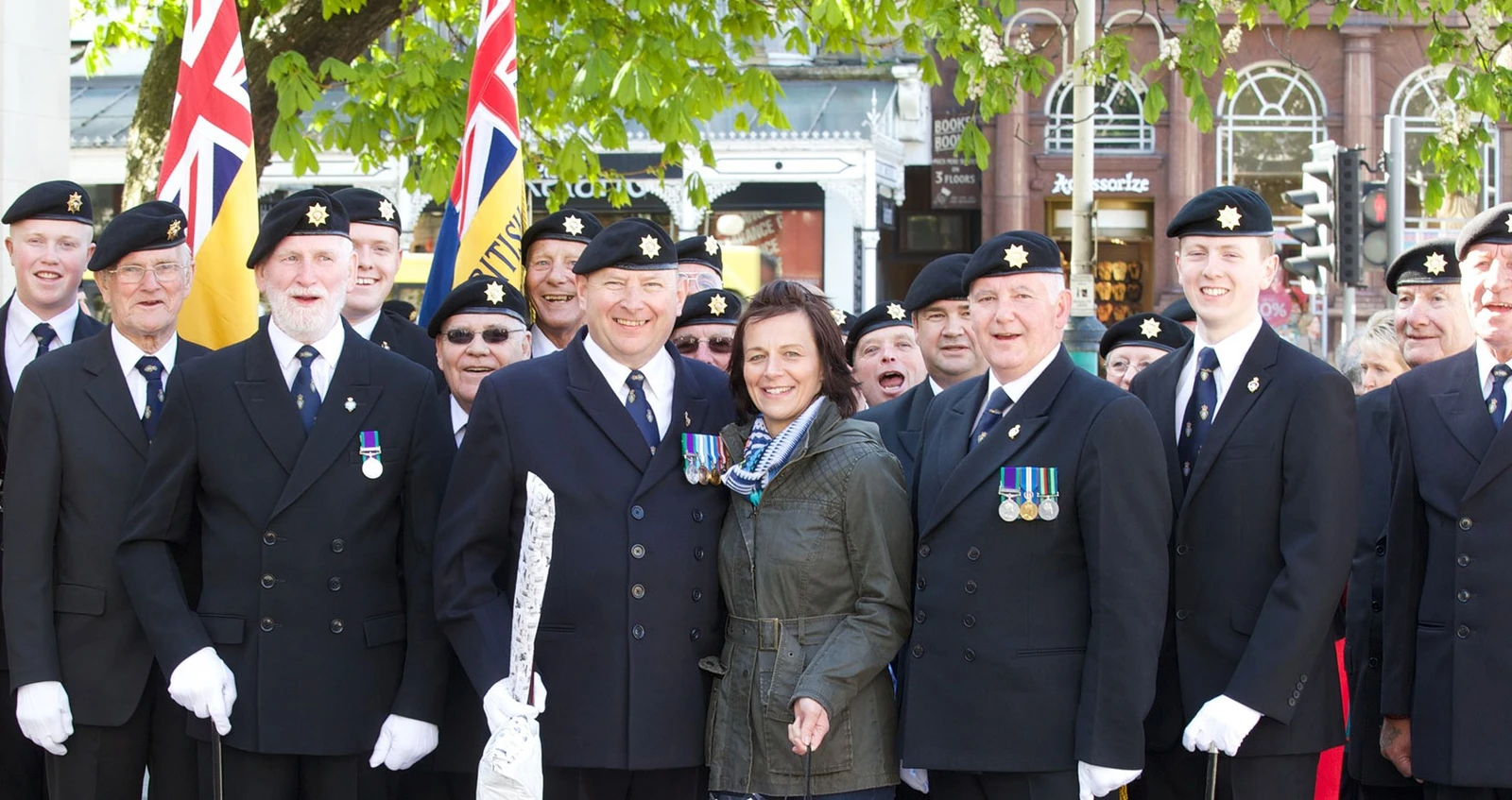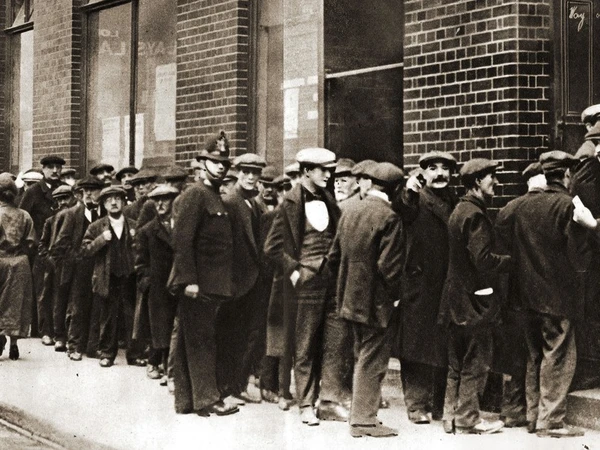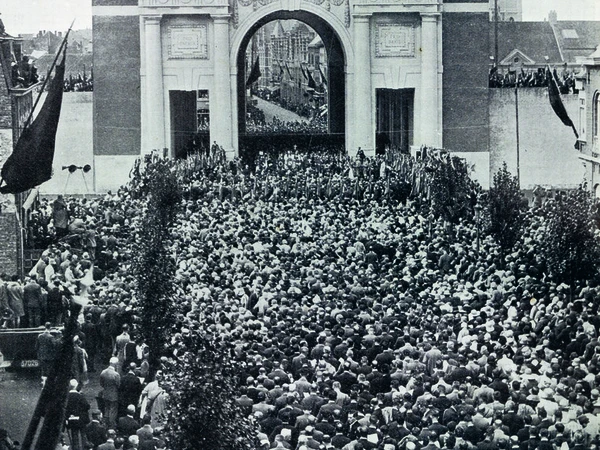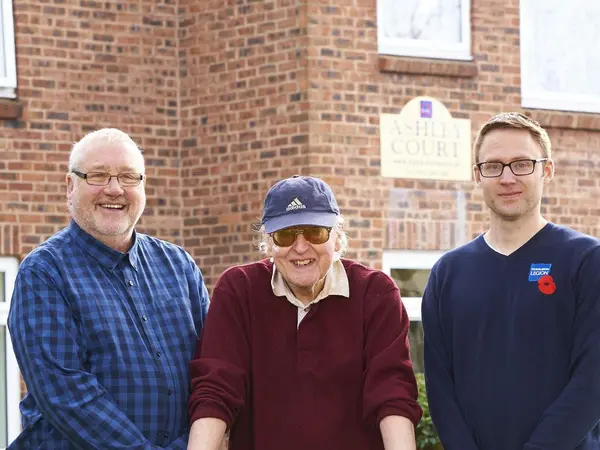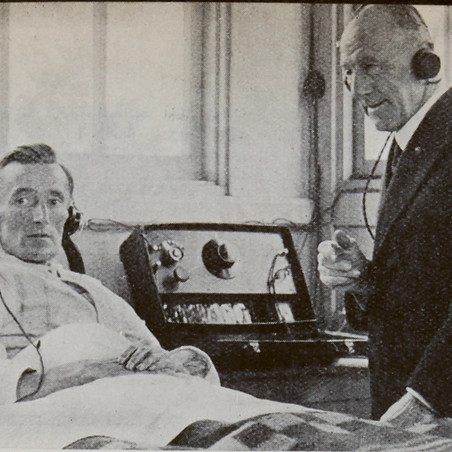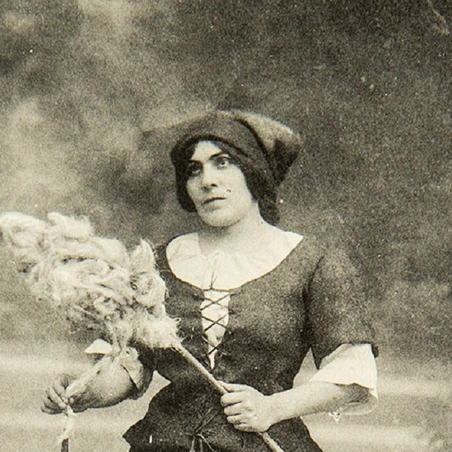Members of the Royal British Legion have been vital to our work since 1921 and continue to play a key role in supporting the Armed Forces community and championing Remembrance today.
After the British Legion was formed, members organised themselves into local branches and this system is still in place today.

180,000
With a footprint in almost every town and many villages across the four countries of the United Kingdom, RBL branches are ideally placed to spot people who need support locally and bring them to the attention of local welfare staff.
Aftermath of the First World War
More than 6 million men from Britain had served during the First World War, of whom more than 700,000 were killed and some 1.75 million wounded or disabled.
Of that latter number more than half were permanently disabled. Widows, orphans, families of the wounded, disabled and unemployed all needed our support.
The formation of RBL also coincided with the Great Depression which brought mass unemployment and great uncertainty.
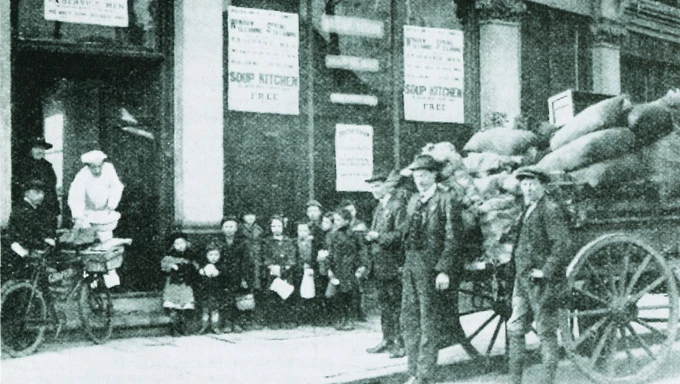
Much of the early work of members was focussed on helping those in urgent need of support, with funds from the Poppy Appeal in 1922 used to feed children in Crouch End.
The Women's Section
Earl Haig spoke of the need to enlist the support of women from 1920, but initially they could not become members of the Legion itself, so they formed the Women’s Section in July 1921.
The role of women in society had begun to change as a result of the First World War and many men saw women as a threat. Women had taken on the jobs of men during the conflict and in 1918 some were given the right to vote.
In some parts of the country women found it difficult to get permission from their male counterparts to establish a Women's Section branch.
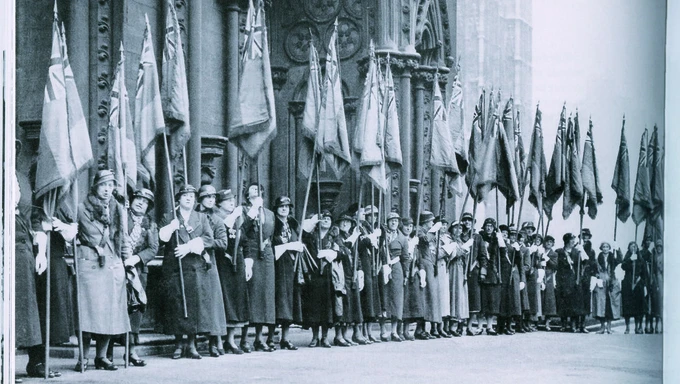
But despite this early opposition, the Women’s Section became a vital part of the organisation. Over the last 100 years the role of the Women’s Section has evolved but the fundamentals have not changed.
One of its greatest commitments is to help children of serving and ex-Service personnel to get the best from their education. This can start with pre-school assistance for the purchase of baby items, essential clothing, bedroom furniture and school equipment.
Tackling tuberculosis
In its early days, the British Legion was also deeply concerned by the rates of tuberculosis (TB) among returning service personnel. Over 55,000 men returned from the war suffering from the disease, and by 1922 18,000 had died.

After seeing the community suffer, and wanting to help, members helped to create a dedicated TB hospital and village which opened in 1925.
Over 95 years later the village in Aylesford, Kent continues to provide housing and support to over 300 members of the Armed Forces community, thanks to our charity partner Royal British Legion Industries.
The Great Pilgrimage
Planned to take place on the tenth anniversary of the so-called ‘100 days’ that marked the battles which led to the end of the First World War, the Great Pilgrimage saw 11,000 veterans and widows, including 2,000 Standard Bearers, cross the Channel on 5 August and make their way by train and coach to the battlefields of the Somme.
Earl Haig was behind the idea of this huge undertaking and wished that the climax of the visit, the ceremony at the Menin Gate Memorial, should take place on 8 August, the date of the first of those defining battles.
In 2018 over 1,000 members travelled to Belgium to mark the 90th anniversary of the Great Pilgrimage, marching through Ypres to the Menin Gate.
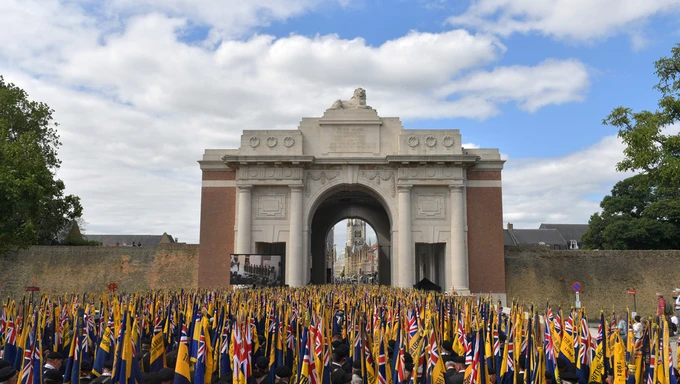
100 years of supporting the Armed Forces community


Working with younger generations
Members play an important role in helping younger generations understand Remembrance.
Dilys Hooper is a passionate RBL member who has been involved in one way or another since she was 20 when she volunteered as a collector in the week leading up to Remembrance Sunday.
Today she is on the Membership Council with a special remit to represent Youth.
‘The youth are our future and our custodians of Remembrance,” says Dilys.
“If we don’t nurture them now, Remembrance will not follow through.’
Over the past few years she has been involved in an initiative with members of the Women’s Institute who knit poppies for schoolchildren in Reception classes.
A poppy is given to each child to wear on their school uniform and then to give to their parents as a memento of their first Remembrance Sunday. It is a simple idea but it taps into a deep sense of commitment from the older generation and a sense of excitement from the five-year-olds.
*Images from P.120 of book
Supporting local communities
When Terence Lake suffered a stroke and his home was burgled, Paul Wallace, a member of RBL’s Oakengates & District Branch in Shropshire helped the Army veteran find a new home.
And during lockdowns enforced because of Covid-19, many members have acted as telephone buddies, keeping in touch with vulnerable members of their community.
For 27-year-old Grace and 99-year-old Ethel, it became the start of a valued friendship.
During these weekly calls, Grace struck up a friendship with former nurse Ethel, who began her career during the Second World War.
“Although I’ve been stuck at home, having Grace calling me up and other members ensuring I am ok has been really appreciated,” said Ethel.
"I have even learnt to video chat thanks to my son’s help and managed to speak face-to-face with Grace, which was just lovely."
Looking to the future
Although much has changed over the last 100 years, the role of our members has remained vital in our support of the Armed Forces community.
Our unique network of branches has stood the test of time and helps us reach those in need across the United Kingdom and around the world.


